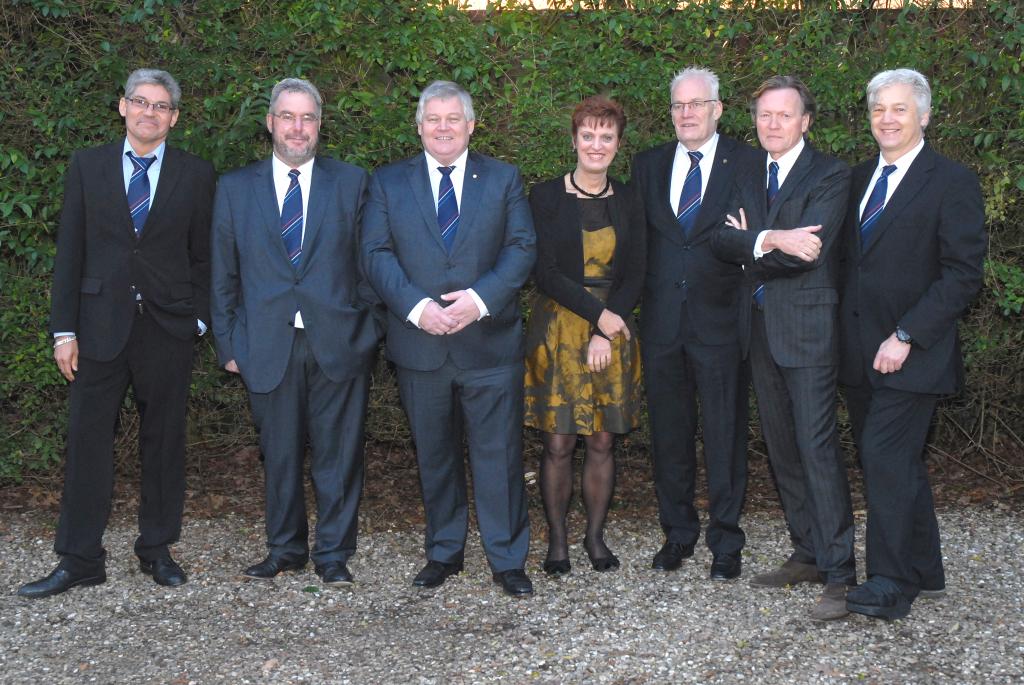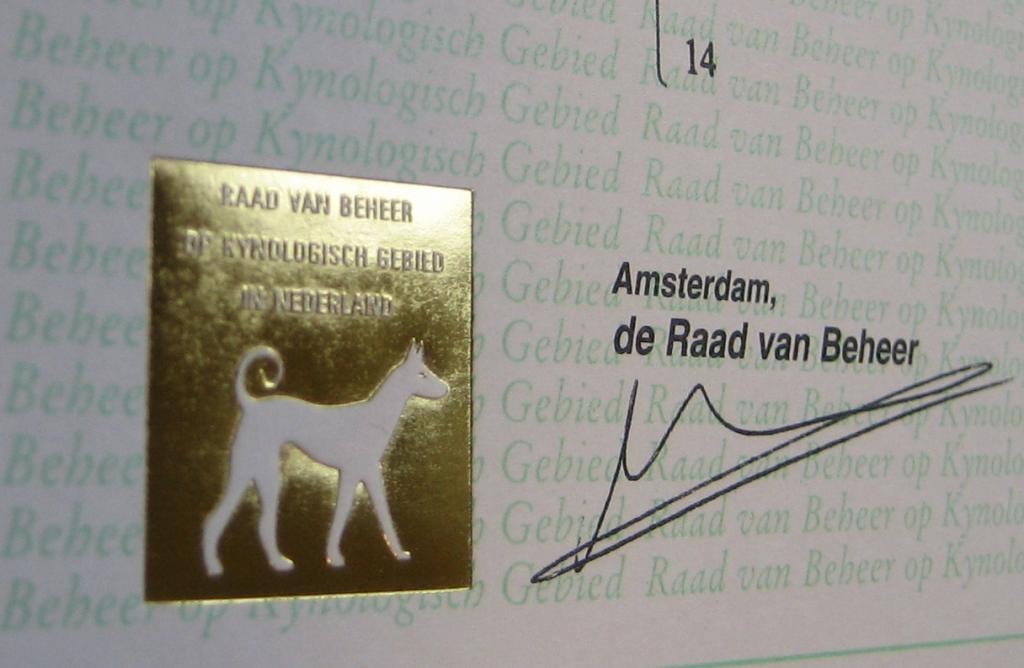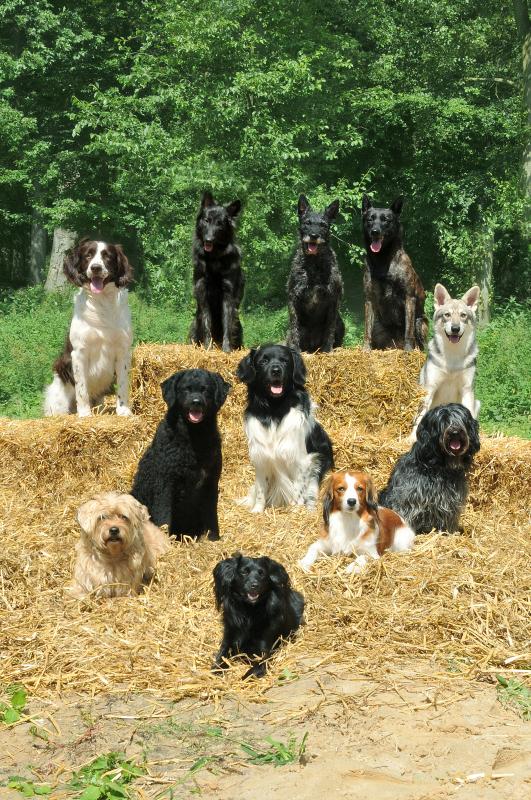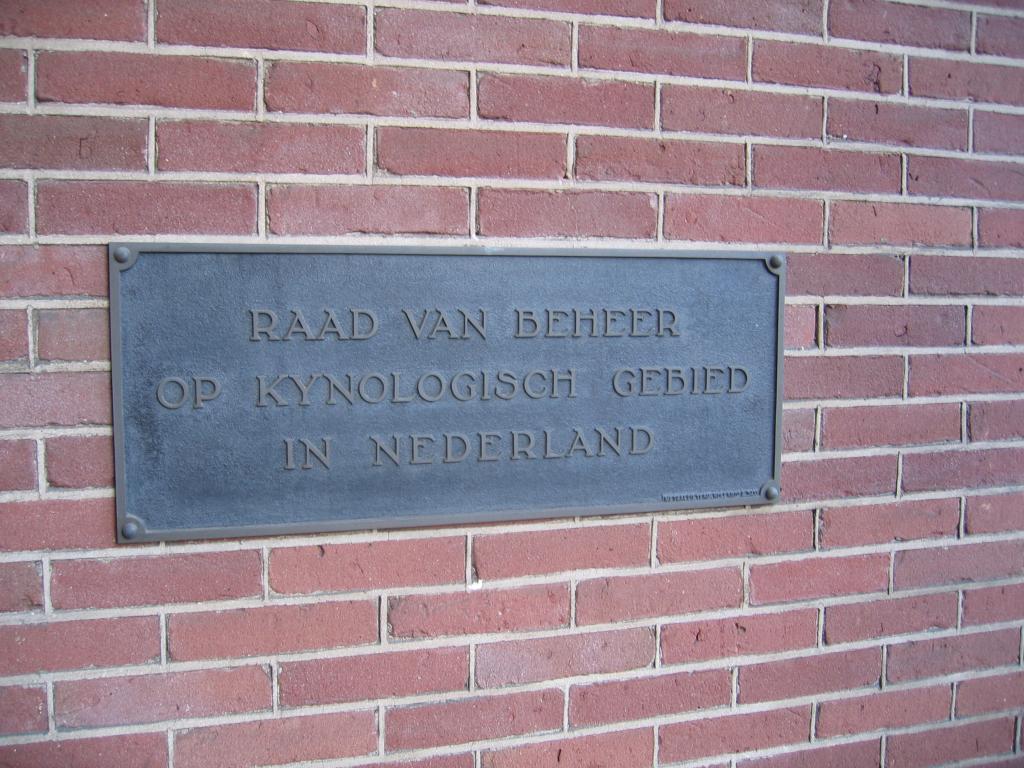Introducing the Dutch canine organisation, the Dutch Kennel Club ‘Raad van Beheer’
With ambition, pride, ability and devotion of the Dutch breeders of dogs, we introduce
the Netherlands, a nation of livestock breeders, united in numerous clubs, each
with their own organisation.
A country needs international cooperation and competition to maintain the quality
and health of the different breeds.
The breeding of livestock and animals used for sports has reached a high standard
and many of our show and jumping horses, cattle, dogs, cats, poultry and birds are
world famous.


Board of the Dutch Kennel Club 2013
With the organisation of national and international shows the Dutch Kennel Club
‘Raad van Beheer’ promotes the necessary exchange of bloodlines and judging experience.
The European Union gives us the opportunity to travel efficiently with our animals
without border regulations.
Responsible care, not only for the health but also for the welfare of the animals
needs intense and suitable supervision.
In the year 1902 the Dutch Kennel Club ‘Raad van Beheer’ was founded.
After a period of thirty years, starting in 1872, the Dutch Society of Agriculture
organised the first shows for dogs as well as poultry, followed by shows and field
trials, organised by Nimrod, the hunters’ society, and Cynophilia, and later on
by the “Kynologenvereniging Nederland” (Canine Society Netherlands), each society
with its own registration system and pedigrees. To avoid confusion it was decided
to set up a new administrative centre with the name ‘Raad van Beheer op Kynologisch
Gebied in Nederland’. Each of the founding societies, Nimrod, Cynophilia and Kynologenvereniging
Nederland, appointed two of its members in the Board of Directors of the new organisation.
Their task was to make rules for a superb registration system and for the issuing
of pedigrees of the registered dogs. This studbook was called the Nederlands Honden
Stamboek (N.H.S.B.). Another goal was to set up rules for shows and field trials.
In the meantime, a number of breed clubs such as the Dutch Terrier Club, the Great
Dane Club, the Setter Club, the Dutch Shepherd Club, the Dachshunds and Basset Club
and local canine societies such as the Kynologenclub Amsterdam (Canine Club Amsterdam),
applied for recognition and permission to promote special breed interests as well
as the possibility to organise shows in their own district.
In 1906 the Kynologenclub Amsterdam was discontinued and the remaining official
clubs appointed two new members in the Board of Directors of the Dutch Kennel Club
‘Raad van Beheer’.
In 1911, the Dutch Kennel Club ‘Raad van Beheer’ joined the Féderation Cynologique
Internationale (FCI) during the first meeting in Paris when the FCI was established.
In 1929, Nimrod, the Royal Dutch Hunting Society – convinced that the registration
of hunting breeds and the issuing of pedigrees and the registration of the results
of the dogs in field trials was in good hands - ceased to exist and the two seats
Nimrod occupied in the Board of Directors of the Dutch Kennel Club ‘Raad van Beheer’
were assigned to delegates of the recognised clubs.
At that same time it was decided to change the number of delegates on the Board
of Directors to nine. Six of them were to be appointed by the recognised clubs and
three by Cynophilia on the condition that the president, the secretary and the treasurer
should always be delegated by Cynophilia.
At the end of the 20th century, democratic rules required a modern organisation
and from the 1st of January 2000, The Dutch Kennel Club ‘Raad van Beheer’ gave up
its position as a more or less independent society and changed into a union of which
all the breed clubs and local clubs formed its members.
Nowadays there are 200 breed clubs, 70 local clubs and some 10 special clubs, such
as the Dutch Judges Society, 12 Sighthound clubs for racing and coursing etc. Together
they represent 150,000 private members.


Detail of Pedigree Raad van Beheer
Some important figures
Number of pure-bred puppies entered in the studbook (NHSB) in 2012: 42,000
Number of breeds registered annually: ca. 260
Number of dogs at Dog Shows, trials and sport activities: about 50,000
FCI Conferences in the Netherlands
Germany, Austria, Belgium, France and the Netherlands founded the FCI in 1911. In
1912, the first conference took place in Amsterdam. The following conferences were
held in 1930, 1950, 1959 and 1985. We do not have much information about the conferences
of 1912 and 1930 regarding the locations, the participating countries and the decisions
taken.
According to the minutes of the conference of 1950, the Dutch Professor Hirschfeld
led the conference in an excellent manner. This to great surprise and disappointment
of the Secrétaire Général of the FCI, Baron Albert Houtart, who demanded the chairmanship
of the conference such as in previous years. At this conference, it was the first
time in the history of the FCI that a delegation of the English Kennel Club gave
‘acte de présence’. The participating delegations, not many in number, were excellently
received.
Shortly after that very well led conference there were, after the death of Le Secrétaire
Général, serious problems, caused by his successor, who was too much focused on
the French segment of the FCI. This gave rise to the formation of two groups of
countries, namely a Scandinavian-Germanic block versus a Roman block. The FCI was
threatened to disintegrate by the individual actions of a few countries that rejected
almost all proposals.
After this tumultuous period, the Netherlands was asked to organise a conference
in 1959. The conference took once more place under the expert and strict
chairmanship of the Dutch Professor Hirschfeld, who, in all languages recognised
by the FCI, gave all the delegations reply, without intervention of interpreters.
In this meeting, many proposals were made and accepted, namely the revision of breed
standards and the cooperation between the Union Internationale des Clubs de Lévriers
and the FCI. At that time, this cooperation was a hot issue.
In addition, a committee was formed under the chairmanship of Martin van de Weijer.
This committee was given the task to design a reorganisation plan for a strong structure,
which would continue to function for a longer period. The proposals of this committee
- such as the terms of the Chairman, the forming of Commissions for Breed Standards,
for Legal Affairs and for many other policy fields - were accepted and are in 2013
still relevant. In honour of the FCI World Congress in the Netherlands in 1985,
a special Winner Show took place in Amsterdam. Besides this conference, an International
Judges Conference was held, where people still talk positively about, nationally
and internationally.


Dutch Breeds
The pride of Dutch Dog World
The national pride of the Dutch Dog World consists of nine very special breeds.
Actually eleven, if we consider the three coat varieties of the Dutch Shepherd as
independent breeds. Most Dutch breeds are very rare and you seldom see them outside
their native country. Most of our breeds have been working in the fields with sheep
and cattle or hunting deer, rabbit and even duck. When there was no longer daily
work left for most of them, a few people tried to preserve these breeds, one of
them was Mr P.M.C. Toepoel.
Our breeds are registered in five different FCI Groups. A very big variety for such
a small country, telling us that the Dutch people wanted to have their own special
dogs for special work.
Dutch Dog shows
The first dog show in the Netherlands was held on May 28th, 1872 in Rotterdam with
an entry of 217 dogs. It was a combined show with chickens, birds and other fowl.
The hunting society “Nimrod” and the “Cynophilia”, gave birth to the way shows were
held in the Netherlands.
Dog shows are regularly held in the Netherlands since the Dutch Kennel Club ‘Raad
van Beheer’ was founded in 1902. In shows earlier held in the last century, dogs
had to visit shows on both days if a show was held on two days. This changed when
more “one-day” shows were introduced and breed groups were judged on different days.
Every recognised breed club has the right to organise a club show where CAC points
can be won. 40,000 dogs are entered at the club shows yearly. Each FCI breed group
has the right to organise a CAC Specialty show.
15 CACIB shows per year are organised in the Netherlands by regional dog clubs.
Entries on the Dutch CAC and CACIB shows are about 40,000 a year.
When the FCI world congress was held in the Netherlands in 1985, a special Winner
Show was held in honour of it and brought 10,194 dogs. At the 2002 World Winner
Show in Amsterdam some 14,500 dogs and 298 breeds entered the show. In 2011 The
Dutch Kennel Club organised the FCI European Dog Show in Leeuwarden in combination
with a CAC show. This event attracted 10,500 dogs. There were a lot of visitors
from abroad and this event received very good critics for the well run organisation,
the hospitality and the main ring programme. Music and flowers created a great atmosphere,
the space was appreciated and an international judges panel from nearly all the
FCI partners was invited.
The yearly Amsterdam Winner Show is the biggest show in the Netherlands in numbers:
yearly between 4,500 – 5,000 dogs with an average of 270 breeds. Other shows have
between 2,300 – 3,000 entries.
Dutch shows are well-known for their good organisation and for a good cooperation
between them.
The Dutch Kennel Club’s office in Amsterdam


Sign at Office Raad van Beheer
Canine activities cover all aspects of the relationship between people and dogs.
An important area is expertise regarding the breeding of dogs, and canine health
and well being, along with all aspects of dog sports.
It is a considerable field of activity given that there are about 1.5 million dogs
in the Netherlands. Approximately 500,000 of these dogs have an FCI pedigree and
belong to one of the approximately three hundred and thirty breeds recognised in
this country.
The Dutch Kennel Club activities, however, have expanded considerably as a result
of the popularity of all aspects of new dog sports, health and welfare issues and
the demands of dog owners, breeders, members and other groups.


Bureau Raad - Emmalaan
The Head Office of the Dutch Kennel Club 'Raad van Beheer' is located at Emmalaan
in Amsterdam.
Nowadays, the Board of the Dutch Kennel Club has seven members. Board members are
elected by the clubs/members of the Raad van Beheer. Candidates may be proposed
by the Board or by the members of the Raad van Beheer. Each Committee member has
specific responsibilities. Board Members Portfolios are: General Affairs; Legal
Affairs; Staff and Organisation; Education; Behaviour, Health and Wellbeing, Breeding
Policy and Registration, Judges, Shows, Marketing and Communication, Gundogs, Working
dogs, Sight hound Racing and Dog Sports.
About 50 employees support the Board in representing the general interests of Dutch
dog World. From March 2013, the board appointed 2 directors to monitor all canine
aspects and they are responsible for the general management, contact with stakeholders
and all public relations matters. This means maintaining relations with political
and public authorities and many other organisations, which represent the interests
of dogs in specific areas. Other tasks are to inform the public about all the aspects
of dogs and activities, supporting member clubs and their members. Furthermore the
directors monitor and enforce compliance with regulations.
More about the Dutch Kennel Club:
http://www.raadvanbeheer.nl/uploads/media/RvB-Organisation_Profile_def.pdf
http://www.raadvanbeheer.nl/en/raad-van-beheer/
http://www.raadvanbeheer.nl/en/raad-van-beheer/about-the-raad-van-beheer/history/
http://www.raadvanbeheer.nl/en/raad-van-beheer/board/
http://www.raadvanbeheer.nl/en/raad-van-beheer/head-office/